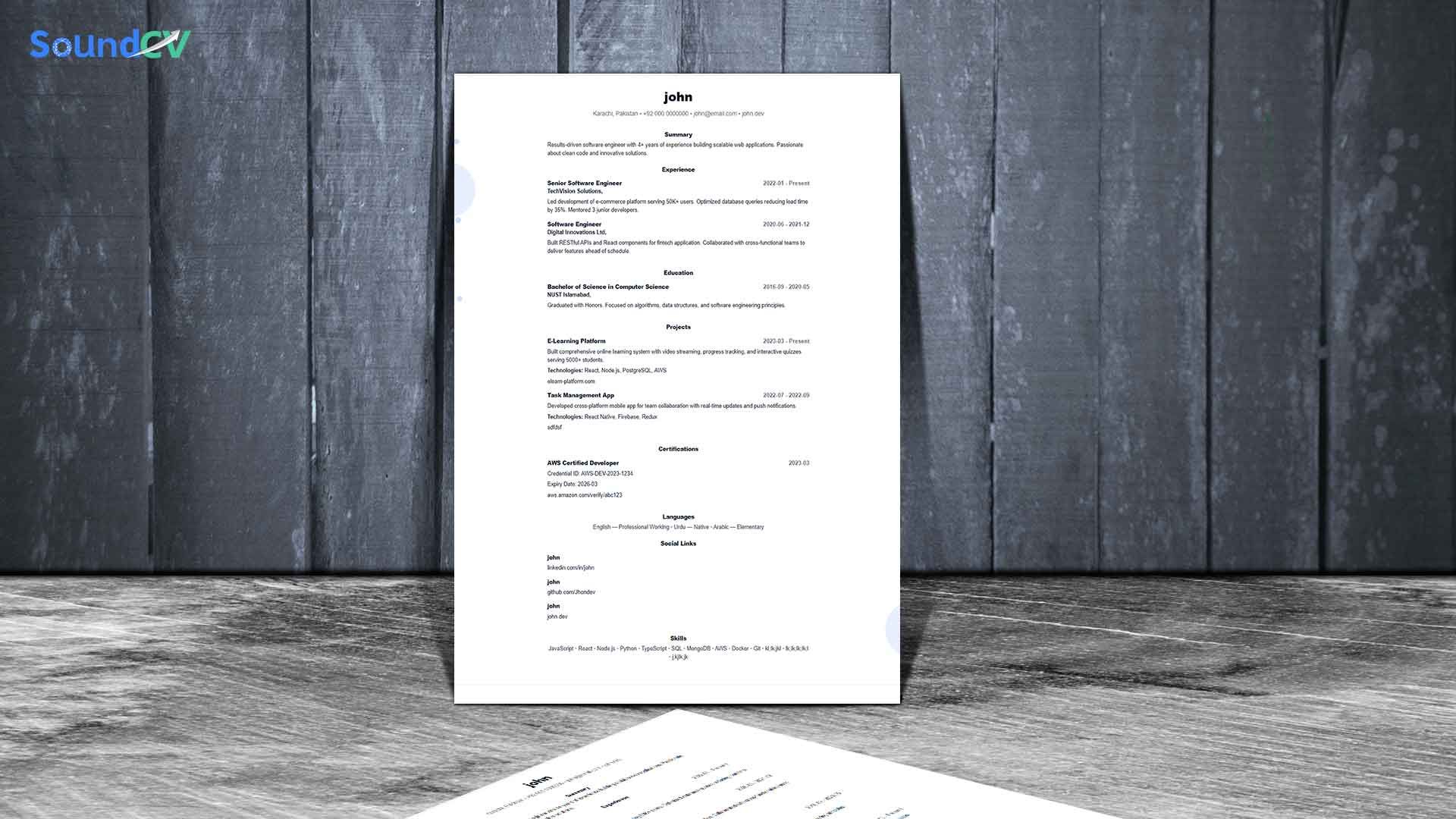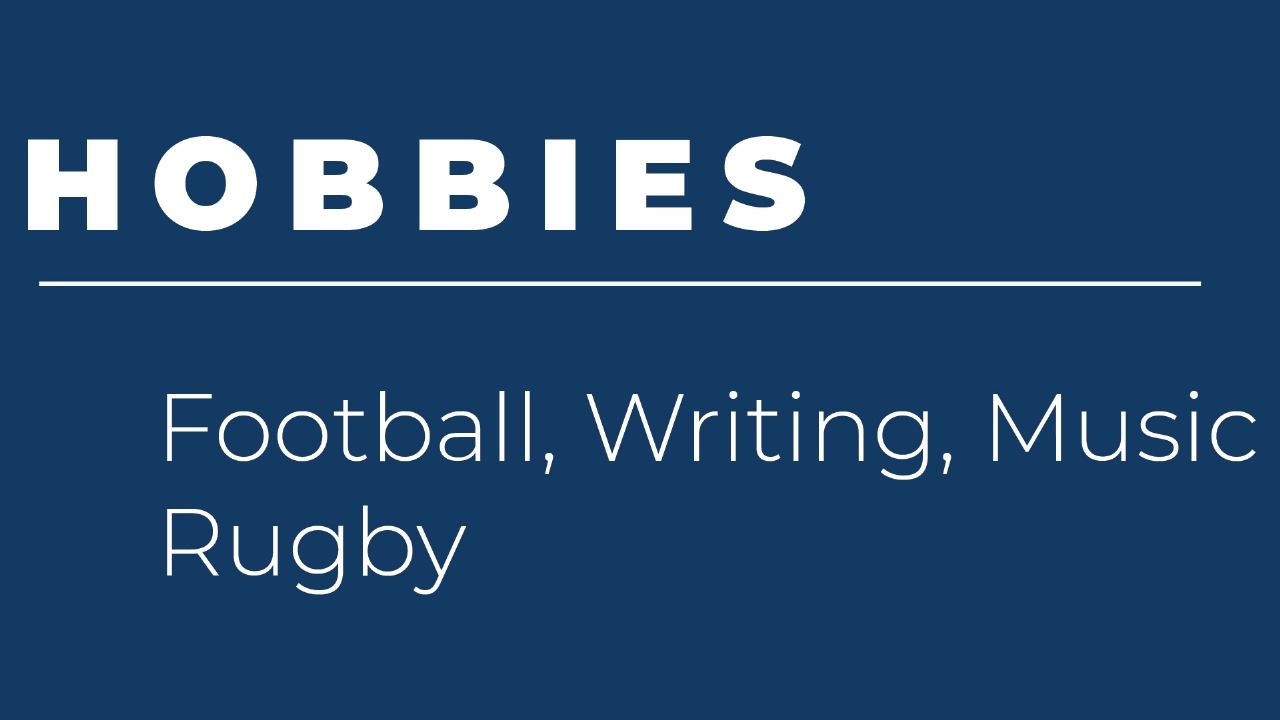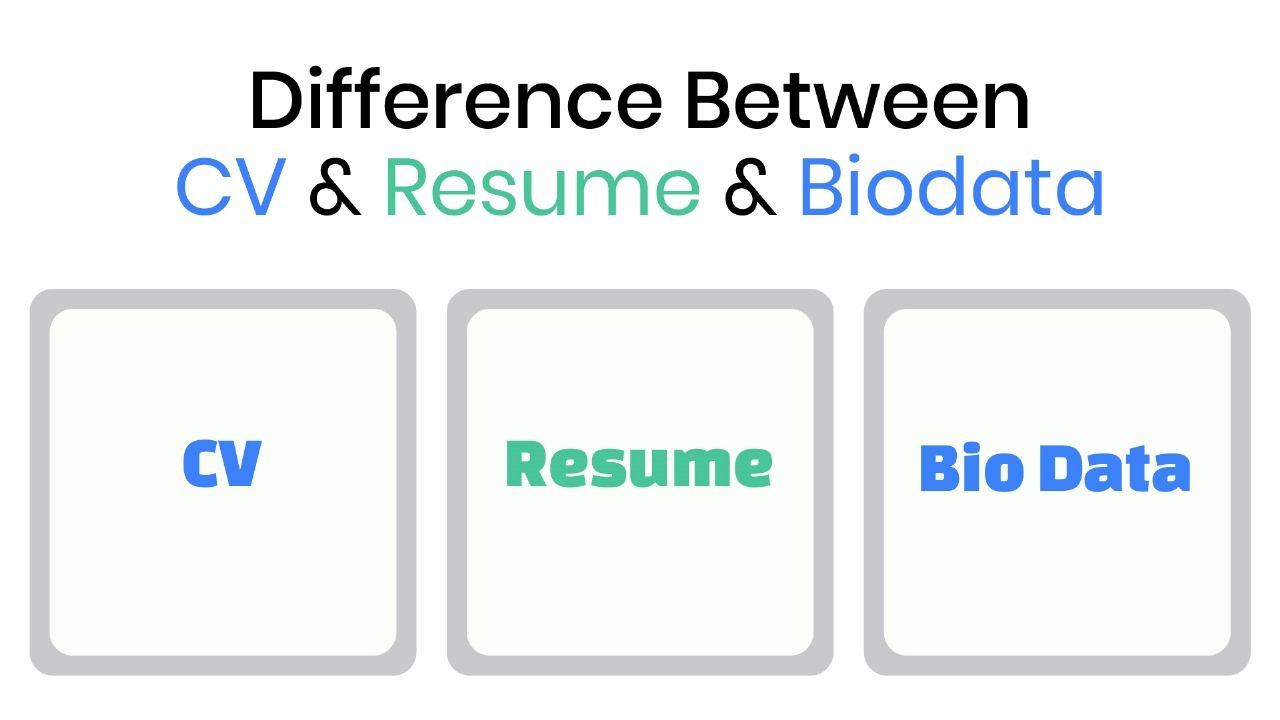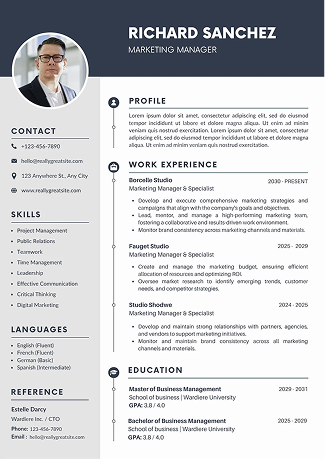What Is the Difference Between a CV Resume and Biodata in 2025
Learn the key differences between a CV, resume, and biodata and discover which one to use for your next job application.
Overview
When applying for jobs, people often confuse a CV, a resume, and a biodata. Each serves a different purpose depending on the job type and region. This guide explains their meanings, key differences, examples, and when to use each—so you can send the right document and improve your chances.
When applying for any job or formal opportunity, you may come across three different terms: CV, Resume, and Biodata. Understanding the difference between CV and resume and biodata can dramatically influence your chances of success. Sending the wrong document or using the incorrect format may cost you interviews and opportunities.
In this guide I’ll walk you step-by-step through their definitions, key features, examples, when to use each, and list 10 key differences so you can clearly see how they compare. We’ll also answer your questions around biodata full form, biodata vs resume, and cv and biodata difference. By the end you’ll feel confident about which document to send, when, and how to tailor it.
What is a CV?

The term Curriculum Vitae (CV) stands for a full record of your academic, research and professional journey.
Typically, a CV is much longer than a resume and provides detailed insight into your experience, achievements, publications and credentials.
Key features of a CV:
- Usually 2-8 pages (or even more, depending on your experience)
- Includes education (degrees, institutions, years), academic achievements, research work, publications, awards, certifications
- Commonly used in academia, medical and scientific fields, research roles
- Often remains stable over time (you update it periodically but don’t tailor it heavily for each job)
- Gives a chronological view of your career path
Example:
If a university professor is applying for a teaching or research post, they will send a CV listing all degrees, research papers, seminars, grants, professional memberships, and teaching experience.
What is a Resume?
The term Resume is a shorter, job-targeted document used in most corporate or private sector roles.
Its purpose is to summarize your skills, work history and achievements relevant to a specific job.
Key features of a Resume:
- Concise usually 1 to 2 pages only
- Focuses on key skills, measurable results, and relevant work experience
- Tailored/customized for each job application: you highlight what the employer wants
- Common in business, IT, marketing, finance and most non-academic roles
- Emphasizes recent roles and demonstrable achievements rather than full academic history
Example:
If you are applying for a Marketing Manager role, your resume highlights your campaign experience, digital marketing skills, results such as “increased sales by 30%”, rather than listing every course you ever did.
Also Read:How to make resume for teacher job
What is a Biodata?
The term Biodata full form is “biographical data”. It is especially used in certain regions (South Asia) in specific contexts. A biodata puts emphasis on personal and background information rather than purely professional achievements.
Key features of Biodata:
- May contain personal information: name, date of birth, gender, marital status, nationality, religion, languages, contact details
- May also include education, hobbies, family background
- Widely used in countries like India, Pakistan, Bangladesh for marriage proposals, certain government job applications, or traditional organizations
- Less about your professional accomplishments and more about your biographical profile
Example:
In South Asia, you may be asked for biodata in a marriage proposal context: family background, personal interests, height/weight, religion, languages known. In government job forms you might fill out a biodata including standard biographical details and educational qualifications in a fixed format.
Also Read:CV Format for Job (2025)
Why It Matters to Choosing the Right Document
If you send a CV when they asked for a resume (or vice versa), or if you send a biodata to a corporate employer, you risk looking unprofessional or mis-reading the employer’s expectations. Understanding the difference between CV and resume and biodata ensures you submit the correct document.
- Use a CV when you are applying for academic, research, medical or international roles that expect detailed credentials.
- Use a Resume when you are pursuing jobs in the private sector or roles where employers want concise, job-targeted profiles.
- Use a Biodata when it’s clearly requested in the South Asian context, or for government/traditional uses where personal biographical data is required.
Quick Comparison Between CV vs Resume vs Biodata
From this you can see how a CV and a resume differ, and how a biodata fits into a different context.
CV and Biodata Difference

If you’re comparing the cv and biodata difference, the key point is that a CV emphasizes professional/academic achievements, while a biodata emphasizes personal biographical details.
- A CV is about “What have I done professionally, academically, research-wise?”
- A Biodata is about “Who am I, where do I come from, what’s my background and personal profile?”
- For professional job applications, a biodata is rarely appropriate unless explicitly requested send a CV or resume instead.
- In South Asian settings particularly for marriage or specific government forms biodata continues to be relevant.
Biodata vs Resume
When you’re doing the comparison biodata vs resume, think of the audience and purpose:
- Resume: Designed to sell your professional value to employers, highlighting measurable achievements and relevant skills.
- Biodata: Designed to provide a biographical profile for organisations or contexts that care about personal background, rather than fine-tuned job relevance.
If you send a biodata to a modern corporate hiring manager who expects a resume, you may miss emphasizing your professional strengths and relevance.
Also Read:Interview Questions for Teachers with Answers
Is Biodata and Resume the Same?
No, biodata and resume are not the same. A resume is a 1-2 page professional document highlighting skills, work experience, and achievements for job applications in corporate settings worldwide.
Biodata (biographical data) emphasizes personal information like date of birth, marital status, and family background, primarily used in South Asian countries for government jobs, marriages, and traditional settings. The core difference: resumes focus on professional qualifications; biodata focuses on personal details.
Quick Comparison Table Between Biodata vs Resume
| Feature | Resume | Biodata |
|---|---|---|
| Length | 1-2 pages | 1-2 pages or fixed form |
| Primary Focus | Professional skills and achievements | Personal and biographical details |
| Usage | Corporate jobs, private sector (global) | Government jobs, marriages, traditional settings (South Asia) |
| Content | Work experience, skills, education | Date of birth, family details, religion, hobbies |
| Customization | Tailored for each job | Usually fixed format |
| Geographic Use | Worldwide | Primarily India, Pakistan, Bangladesh |
| Purpose | Showcase professional value to employers | Provide personal background information |
10 Difference Between CV and Resume
Here is a detailed list of 10 differences between a CV and a Resume Each difference has an explanation to aid clarity.
Length & Depth:
- CV: Typically longer (2-8+ pages) reflecting full academic/professional journey.
- Resume: Short and succinct (1-2 pages) capturing only key, relevant experience for a job.
Detail of Contents:
- CV: Includes detailed sections: education, research, publications, grants, memberships.
- Resume: Includes compressed sections: skills summary, recent work experience with results, education kept brief.
Purpose:
- CV: Used where depth, credentials and academic/research background matter.
- Resume: Used to persuade an employer quickly (in corporate/private hiring) that you’re a good fit.
Customization:
- CV: Often a master document; less tailored to each role (though you may highlight relevant parts).
- Resume: Highly customised to each application—keywords, skills and achievements targeted.
Usage by Sector:
- CV: Academia, medicine, research, international roles, fellowships.
- Resume: Private sector, business roles, corporate jobs, internships, job boards.
Geographic norms:
- CV: Common in UK, Europe, academia worldwide for specific roles.
- Resume: Dominant in USA/Canada/Australia, many corporate markets.
Chronological vs Functional Emphasis:
- CV: Chronological listing of entire career path, education, publications.
- Resume: Functional emphasis—start with summary, highlight achievements, skills relevant to job.
Focus on Achievements vs Professional Story:
- CV: Focuses on the overall academic/professional story and credentials.
- Resume: Focuses on tangible achievements and job-relevant outcomes (e.g., “increased revenue by 40%”).
Personal Information Inclusion:
- CV: Usually includes some basic personal details, but less emphasis on marital status, religion, etc.
- Resume: Even less emphasis on personal details; focus is on professional merits.
- Biodata: Would include extensive personal details.
Updates & Life Cycle:
- CV: You add to it over time; it becomes a living document of your career.
- Resume: You frequently replace or re-format it depending on the job you apply for, focusing on relevance, trimming unnecessary parts.
These ten differences should help you see clearly difference between cv and resume in practice.
When Should You Use Each Document?
Here’s a practical guide to when each document makes sense:
When Use a CV:
- You are applying for an academic role: professor, lecturer, researcher.
- You are in a medical, scientific, or research institute.
- You are applying for an international role or scholarship where detailed credentials are needed.
- You have many years of experience, many publications, certifications, memberships.
When Use a Resume:
- You are applying for a corporate/private sector job (business, IT, marketing, finance).
- You are applying for entry-level roles, internships or job boards where employers expect a short, job-targeted summary.
- You want to tailor your document for each job, highlighting relevant achievements and matching keywords.
When Use a Biodata:
- You are requested to submit it in a South Asian context (India, Pakistan, Bangladesh) for government roles, marriage proposals, traditional organisations.
- The explicit form asked is biodata (you’ll often see “Please send your biodata”).
- You need to provide personal information (family background, date of birth, religion, languages, nationality) that is relevant to the application.
Tips & Best Practices to Creating CV,Resume and Biodata
Here are some practical tips to craft each one well, and avoid common mistakes.
For a CV:
- Begin with full name, contact details, professional profile or summary.
- Present your education (degrees, institutions, years) prominently, especially early in academic roles.
- List research work/publications (if applicable), conferences, seminars, awards, grants.
- Provide professional experience in chronological order with details of roles, responsibilities, achievements.
- Include professional memberships, certifications, training, language skills as needed.
- Use consistent formatting, headings, bullet points for readability.
- Make sure you update regularly. Keep a ‘master’ version and derive shorter versions if needed.
For a Resume:
- Start with a clear professional summary or career objective (2-3 lines).
- Create a Skills section (bullets) highlighting relevant abilities
- Work Experience section use action verbs and measurable results ("led a team of 10", “increased sales by 30%”).
- Keep education concise (degree, institution, year).
- Tailor the resume for each job match keywords in the job description, emphasise relevant achievements.
- Keep formatting clean, one-page or maximum two pages for most roles.
- Use bullet points, avoid dense paragraphs; focus on readability.
For a Biodata:
- Include full name, contact info, date of birth, gender, nationality, marital status (if required).
- Include education (degrees, institution, year) but keep short.
- Mention languages known, hobbies/interests, family background (parents, siblings), religion (if required) and other personal info.
- If used for marriage proposals, you may include height/weight, photo, personality description.
- Make sure you follow the exact format requested (often government roles will provide a form).
- Avoid including too much professional detail if it’s not needed for the context; this is not a resume.
Common Mistakes to Avoid
Examples Templates for CV,Resume and Biodata
Below are sample outline templates for each document to help you visualize how to build them.
CV Example Outline:
- Full Name & Contact Details
- Professional Profile / Summary
- Education (Degrees, Institutions, Years)
- Research Work & Publication
- Academic Awards & Grants
- Professional Experience (Chronological)
- Certifications & Training
- Professional Memberships
- Languages
- References (if required)
Resume Example Outline:
- Full Name & Contact Details
- Professional Summary
- Key Skills (Bulleted)
- Work Experience (Reverse-chronological)
- Role, Company, Years
- Key Achievements (bullet points with metrics)
- Education (Degree, Institution, Year)
- Certifications (if relevant)
- Optional: Hobbies / Interests (only if relevant)
Biodata Example Outline:
- Full Name & Contact Detail
- Date of Birth, Gender, Marital Status
- Nationality, Religion (if required), Languages Known
- Educational Qualifications (Degree, Institution, Year)
- Family Details (Father’s Name, Mother’s Name, Siblings)
- Hobbies/Interests
- Photo (if required)
- Additional Info (Height/Weight, Address, Health information)
How to Choose the CV Resume and Biodata Format Based on Geographic
South Asia (India, Pakistan, Bangladesh)
In many applications (especially government jobs, arranged marriage settings, certain traditional organizations) you may see the term “biodata.” In this region:
- The biodata full form is biographical data, and used especially in cultural/traditional contexts
- Many hiring forms in South Asia may still request biodata or include a biodata section.
- However, when applying to multinational firms, corporate jobs or international roles in the region, check whether a resume or CV is expected many organizations use global standards.
- You may see combinations: some employers ask for “Cv/resume” or “CV/biodata”. Always check carefully.
USA/Canada/Australia & Corporate Markets
- The term resume is the standard document for most job applications.
- The term CV is used primarily for academic, medical, scientific or research roles; otherwise less common
- Biodata is seldom used; if requested, clarify what exactly is expected.
- Thus, knowing the difference between cv and resume helps you pick the correct format.
International/Academic Roles
- Many international scholarship, fellowship or grant applications will ask for a CV because they expect full detail of your academic and research credentials.
- Make sure to check for formatting guidelines (e.g., publications list, teaching experience).
- Tailor the CV only to highlight what the role expects, but maintain comprehensive detail.
Optimizing Your Document for ATS & Modern Hiring Systems
Given modern applicant tracking systems (ATS) and global digital hiring practices, here are some tips to make sure your document (CV or resume) is fully optimized:
- Use clear headings (e.g., Education, Work Experience, Skills) so the ATS can parse them.
- Use bullet points, not large dense paragraphs.
- Use keywords from the job description in your resume (this helps with the “biodata vs resume” discussion: a resume must match the job).
- Use standard fonts and avoid excessive graphics (ATS might struggle).
- Use PDF format unless the employer specifically requests a Word document.
- Keep file name simple: e.g., “John-Smith-Resume.pdf”.
- For CVs with publications, consider using a separate “Publications List” attachment if required.
- For biodata forms: follow the format exactly, fill every requested field, ensure no missing info.
- Write accurate, error-free content typos and inconsistencies hurt your credibility.
11 Best Practice Checklist for Choosing Between a CV, Resume, and Biodata
| Step | Best Practice |
|---|---|
| 1 | Check the job advertisement or application instructions to see which document is requested. |
| 2 | Choose the correct format: CV, Resume, or Biodata. |
| 3 | If CV: include full academic and professional history. If Resume: highlight key achievements and skills. If Biodata: include personal and biographical details as required. |
| 4 | Tailor your document to the specific role (especially for resumes). |
| 5 | Use clear headings, bullet points, and concise language. |
| 6 | Include keywords from the job posting in your resume. |
| 7 | Make sure the document is error-free and properly formatted. |
| 8 | Save and submit the file as a PDF unless otherwise specified. |
| 9 | In South Asia, if a biodata is requested, include required personal details (name, date of birth, nationality, languages, family background). |
| 10 | Keep a master CV updated and create tailored resume versions as needed. |
| 11 | Avoid sending the wrong type of document (e.g., biodata to a corporate job or an untailored CV for a resume-based role). |
Conclusion:
Understanding the difference between a CV, resume, and biodata is more than just semantics—it’s about choosing the right tool for the right job. Whether you’re in Lahore, Karachi, Delhi, Mumbai, or applying internationally, the correct document shows professionalism and awareness. Sound CV helps you create the right one effortlessly.
In short:
- Use a CV when you need to go deep, show full credentials.
- Use a Resume when you need to be lean, focused and job-relevant.
- Use a Biodata when personal biographical detail is specifically required (especially in South Asia).
FAQs
Frequently asked questions about this topic
Related Blogs
Explore more insights and guides you might like.

Harvard CV Format (Free Template + Pro Tips) | 2026 Resume Guide
The Harvard CV format is a clean, ATS-friendly resume layout trusted by recruiters worldwide. Learn its structure, tips, and get a free template.

How to Make a CV for Internship: Step-by-Step Guide for Freshers
Learn how to make a CV for an internship with this easy step-by-step guide. Perfect for freshers looking to create a strong first impression.

Hobbies for Resume: Best Examples & How to List (2025)
Show your personality and skills with the right hobbies on your resume learn what to include, how to list them, and impress employers in 2025.

